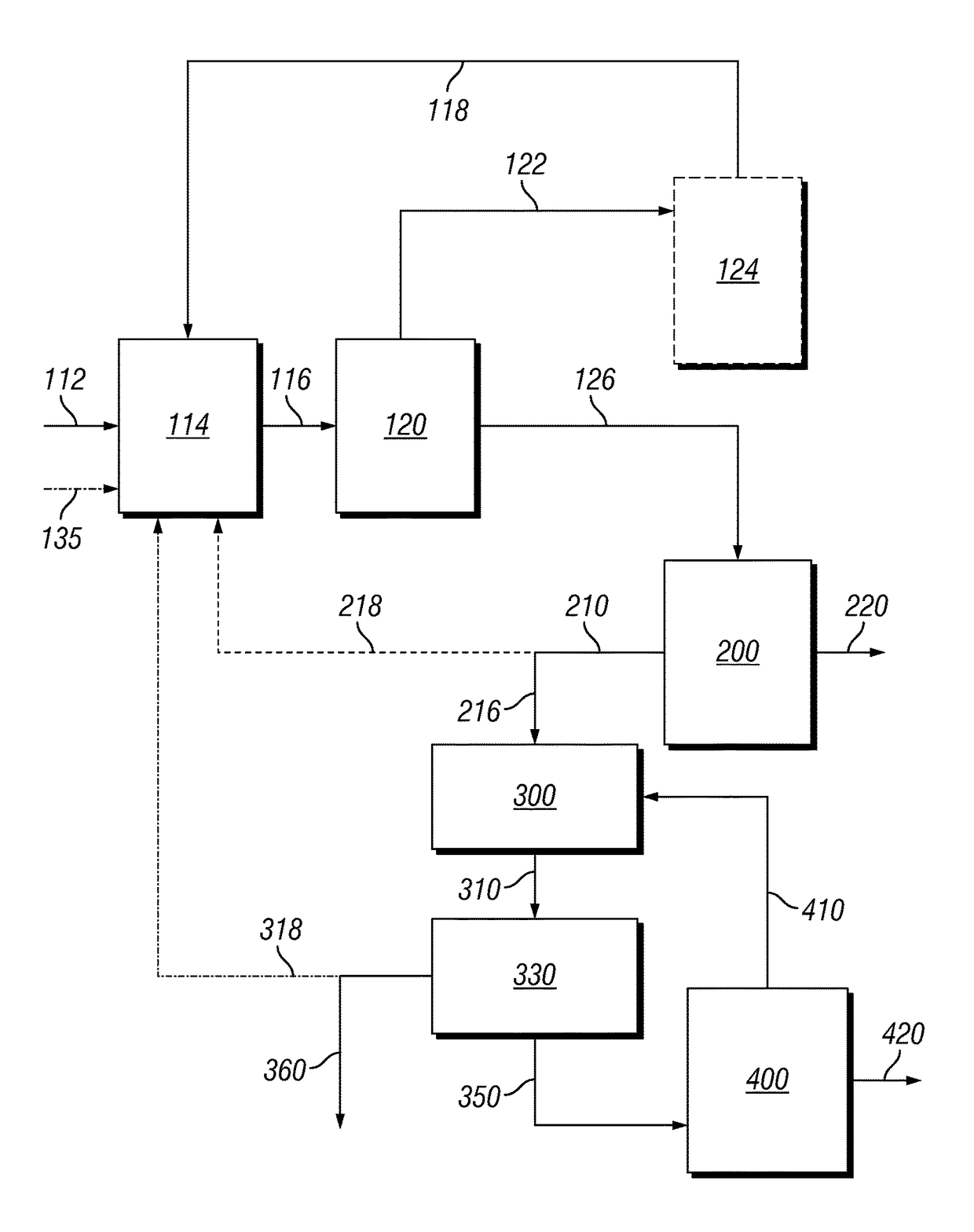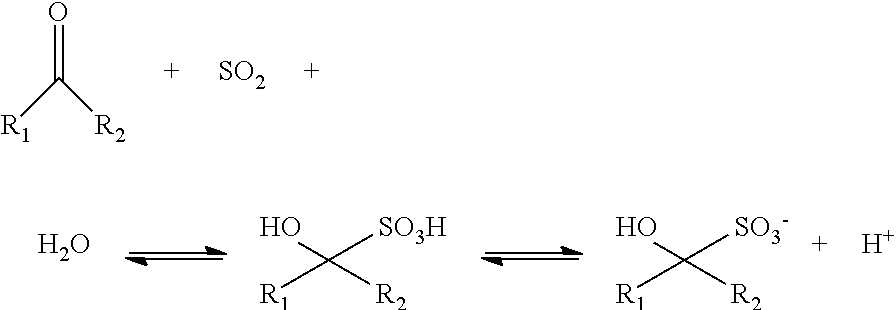Process for preparing furfural from biomass
- Summary
- Abstract
- Description
- Claims
- Application Information
AI Technical Summary
Benefits of technology
Problems solved by technology
Method used
Image
Examples
example 1
Hydrolysis with α-hydroxyethane Sulfonic Acid (HESA)—Stream 1
[0143]Into a 1 gallon C276 Parr reactor fitted with in situ IR optics was added approximately 350 grams of compositionally characterized corn stover [dry basis: xylan 24% wt.; glucan 33% wt., 16% w moisture] chopped to nominal 0.5 cm particles. To this was added approximately 2600 grams (runs 1-3) and 2200 g (runs 4-6) of 5% wt. α-hydroxyethane sulfonic acid (HESA) prepared by the dilution of a 40% wt. stock solution of the acid, acid recycled from vaporization of components at the end of a reaction cycle, excessive pressate liquid from the bottoms after pressing the un-dissolved to about 20-22% w. Runs 1-3 targeted about 11% w fresh dry corn stover to begin a run, while runs 4-6 targeted about 13% w. Target concentration of acid was confirmed by proton NMR of the starting mixture integrating over the peaks for water and the acid. The reactor top with a 4 blade down pitch impeller was placed on top of the reaction vessel a...
example 2
Hydrolysis with α-hydroxyethane Sulfonic Acid (HESA)—Stream 2 and 3
[0144]Into a 7 gallon 316 stainless steel batch circulating digester approximately 1820 grams (29.14% w moisture) of compositionally characterized corn stover [dry basis: xylan 17.7% wt.; glucan 33% wt.] chopped to nominal 2 inch particles. A target fresh dry solids to liquids ratio being 9:1 being targeted for each run. The material was placed in a basket and is fixed during the run while liquid is circulated. The solids are removed at the end of the run after a free liquid drain and pressed to remove additional liquid. 1820 g of fresh stover (1290.5 g dry), 1452 g of 40% w of α-hydroxyethane sulfonic acid (HESA) stock solution, 2984 g make-up water, and 7549 g of recycle pressate (make-up water on run 1). The reactor was brought to 120° C. in about 10 minutes and held for 1 hour. The reactor was then vented to remove the bulk of the acid into a caustic scrubber. The acid was not recycled for this study and was made...
example 3
Xylose Acid Dehydration Using Ion Exchange Resin
[0146]This acid dehydration run was carried out by adding about 3 gm of Amberlyst® 15 (wet) ion exchange resin catalyst (from Sigma Aldrich) in a 300 ml parr batch reactor as described above to the biphasic mixture. The reaction temperature was 140° C. with a residence time of 10 h. After the analysis of aqueous and organic layers, the xylose conversion was 68% and Furfural selectivity was 47%.
PUM
 Login to View More
Login to View More Abstract
Description
Claims
Application Information
 Login to View More
Login to View More - R&D
- Intellectual Property
- Life Sciences
- Materials
- Tech Scout
- Unparalleled Data Quality
- Higher Quality Content
- 60% Fewer Hallucinations
Browse by: Latest US Patents, China's latest patents, Technical Efficacy Thesaurus, Application Domain, Technology Topic, Popular Technical Reports.
© 2025 PatSnap. All rights reserved.Legal|Privacy policy|Modern Slavery Act Transparency Statement|Sitemap|About US| Contact US: help@patsnap.com



